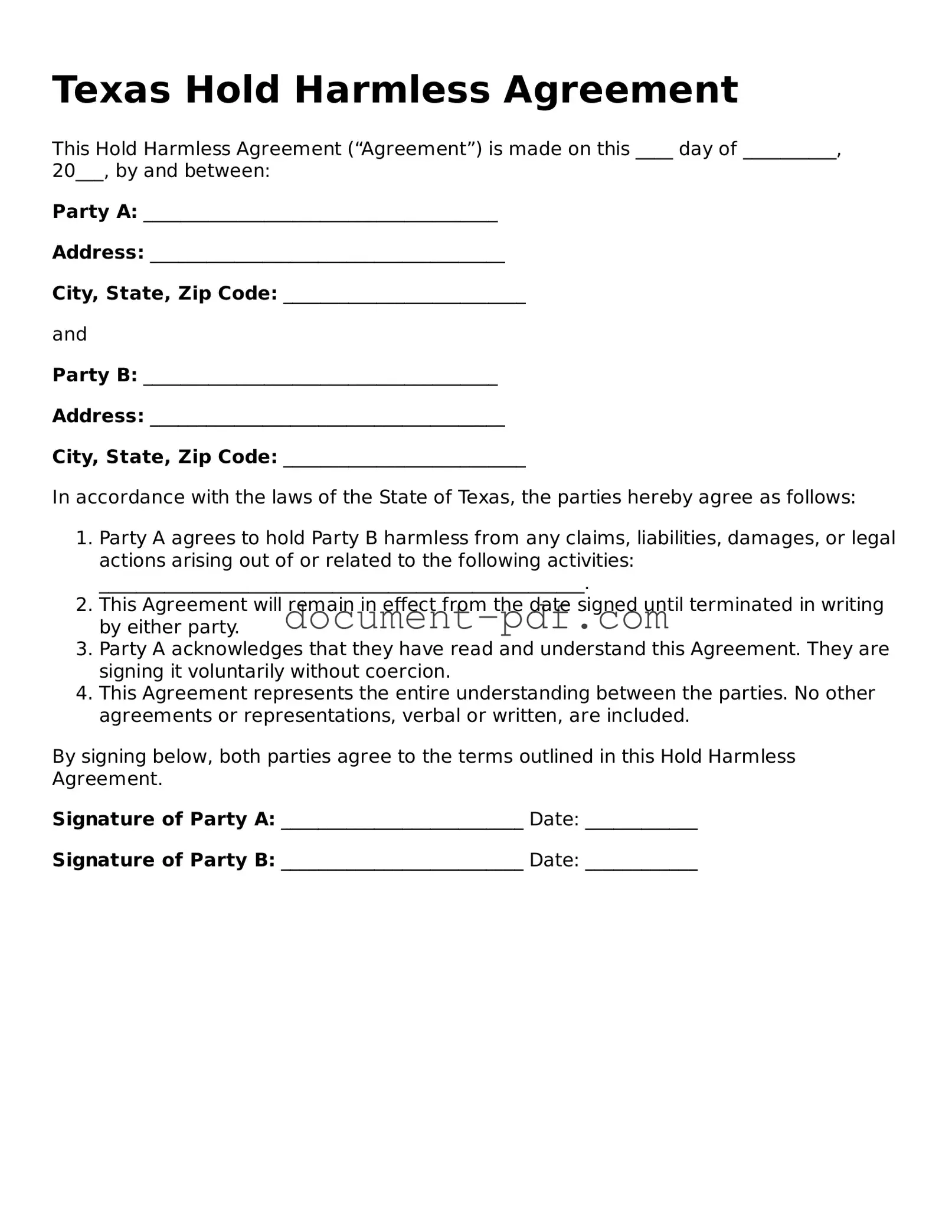Attorney-Verified Texas Hold Harmless Agreement Template
A Texas Hold Harmless Agreement is a legal document designed to protect one party from liability for any injuries or damages that may occur during a specific activity or event. This form is commonly used in various situations, such as construction projects or recreational activities, where risks are inherent. Understanding the nuances of this agreement can help individuals and organizations safeguard their interests.
To ensure your protection, consider filling out the Hold Harmless Agreement form by clicking the button below.
Access Hold Harmless Agreement Editor Here
